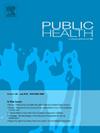复发性糖尿病足溃疡患者的风险预测模型:系统综述
IF 3.9
3区 医学
Q1 PUBLIC, ENVIRONMENTAL & OCCUPATIONAL HEALTH
引用次数: 0
摘要
目的系统回顾已发表的关于糖尿病足溃疡复发风险预测模型的研究。研究设计:系统评价。方法检索中国知网(CNKI)、中国生物医学文献数据库(CBM)、万方数据库、中国科技期刊数据库(VIP)、PubMed、Web of Science、Cochrane Library和Embase数据库,检索时间为建库至2023年11月5日。从选定的研究中提取数据,包括作者、国家、参与者、研究设计、数据源、样本量、结果定义、预测因素、模型开发和性能。使用预测模型偏倚风险评估工具(PROBAST)检查表评估偏倚风险和适用性。结果共检索到677项研究,经过筛选,8项研究的8个预测模型被纳入本综述。本研究利用logistic回归、COX回归和机器学习等方法建立糖尿病足溃疡复发风险预测模型。糖尿病足溃疡复发率为20% ~ 41%。最常用的预测指标是糖化血红蛋白和糖尿病病程。报告曲线下面积(AUC)范围为0.690 ~ 0.937。所有的研究都被发现存在高偏倚风险,主要是由于结果测量的问题和分析领域报告的不足。这些研究没有发现有高偏倚风险,主要是由于结果测量的问题和分析领域报告的不足。结论虽然纳入研究的糖尿病足溃疡复发预测模型表现良好,但根据PROBAST检查表,所有模型均存在高偏倚风险。未来的研究应侧重于开发更大样本、严格研究设计和多中心外部验证的新模型。本文章由计算机程序翻译,如有差异,请以英文原文为准。
Risk prediction models for patients with recurrent diabetic foot ulcers: A systematic review
Objectives
To systematically review published studies on risk prediction models for patients with recurrent diabetic foot ulcers.
Study design
Systematic review.
Methods
China National Knowledge Infrastructure (CNKI), Chinese Biomedical Literature Database (CBM), Wanfang Database, China Science and Technology Journal Database (VIP), PubMed, Web of Science, the Cochrane Library and Embase were searched from inception to November 5, 2023. Data from selected studies were extracted, including author, country, participants, study design, data source, sample size, outcome definition, predictors, model development and performance. The Prediction Model Risk of Bias Assessment Tool (PROBAST) checklist was used to assess the risk of bias and applicability.
Results
A total of 677 studies were retrieved, and after a screening process, eight predictive models from eight studies were included in this review. The studies utilized logistic regression, COX regression, and machine learning methods to develop risk prediction models for diabetic foot ulcer recurrence. The rate of diabetic foot ulcer recurrence was 20 %–41 %. The most commonly used predictors were HbA1c and DM duration. the reported area under the curve (AUC) ranged from 0.690 to 0.937. All studies were found to be at high risk of bias, mainly due to problems with outcome measures and poor reporting of analytic domains. the studies were not found to be at high risk of bias, mainly due to problems with outcome measures and poor reporting of analytic domains.
Conclusions
Although the performance of the diabetic foot ulcer recurrence prediction models included in the studies was decent, all of them were found to be at high risk of bias according to the PROBAST checklist. Future studies should focus on developing new models with larger samples, rigorous study designs, and multicenter external validation.
求助全文
通过发布文献求助,成功后即可免费获取论文全文。
去求助
来源期刊

Public Health
医学-公共卫生、环境卫生与职业卫生
CiteScore
7.60
自引率
0.00%
发文量
280
审稿时长
37 days
期刊介绍:
Public Health is an international, multidisciplinary peer-reviewed journal. It publishes original papers, reviews and short reports on all aspects of the science, philosophy, and practice of public health.
 求助内容:
求助内容: 应助结果提醒方式:
应助结果提醒方式:


